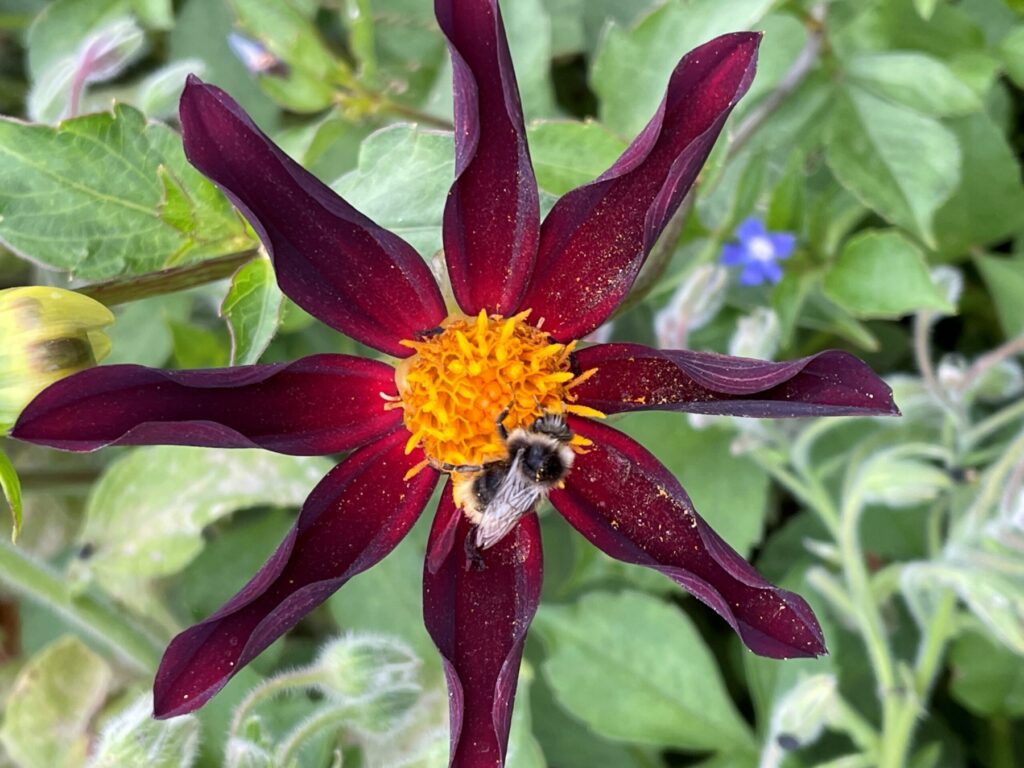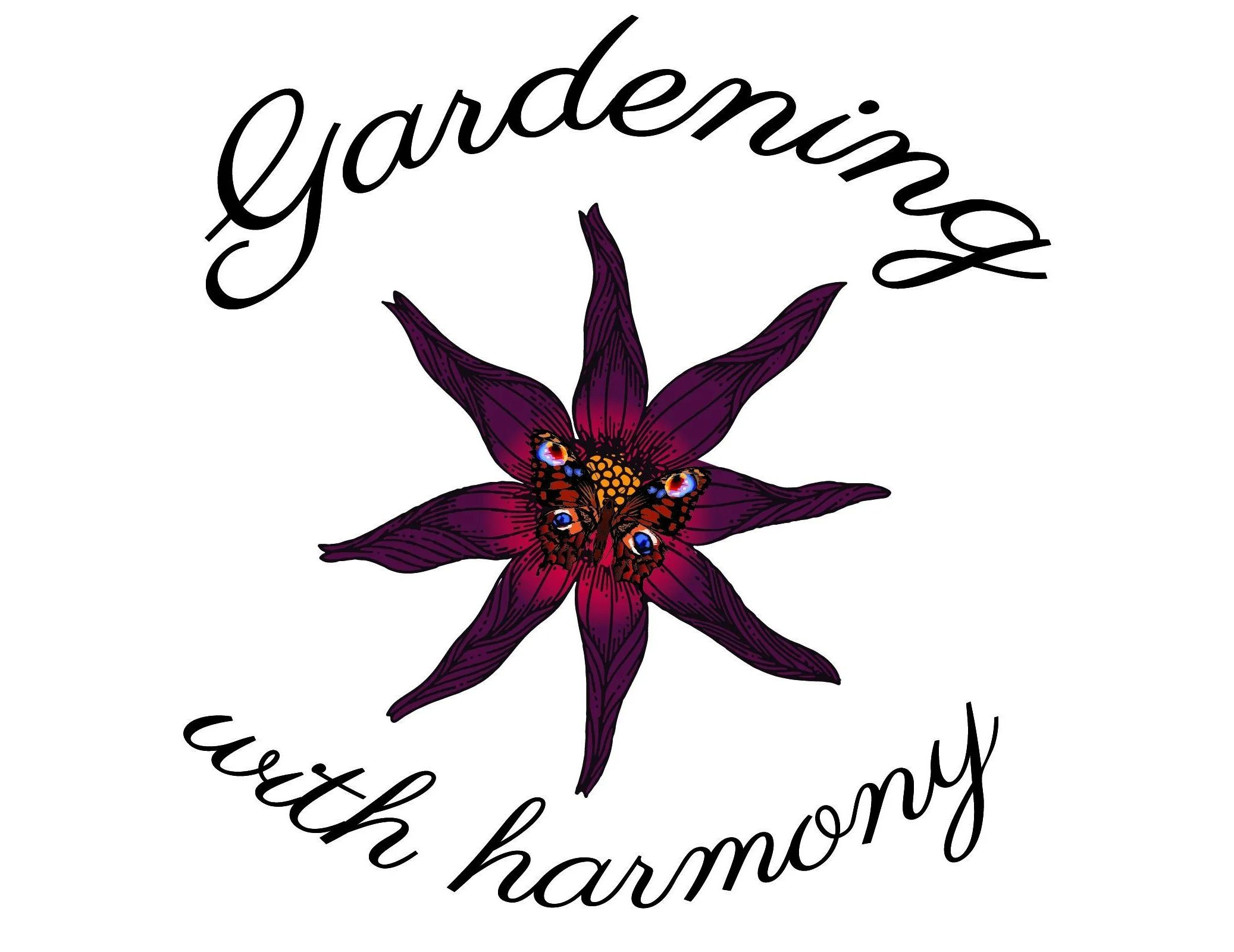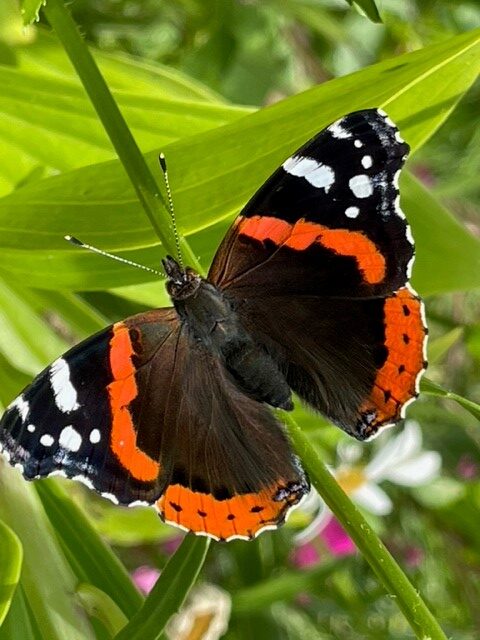The Big Butterfly Count, now in its 13th year, is a UK-wide citizen science survey run by Butterfly Conservation. This year the Count officially runs from Friday 14 July until Sunday 6 August. I have always joined in with counting beautiful butterflies and hope that you will too.
Here is the link for more information https://bigbutterflycount.butterfly-conservation.org/
The alarming news, published by The Butterfly Conservation in February 2023, stated that 80% of butterflies in the UK had declined since the 1970s.
Clearly, this was a truly shocking number but unfortunately it is not so surprising to anyone who grew up in the 1970s or before. Many people will remember seeing a huge amount of these beautiful creatures sharing our gardens with us.
However, the good news is that we can help them, and it is not a difficult task to make a difference. Indeed, if we all work together to make some small changes in how we garden and what we grow we can make a difference.
Butterflies will visit any garden, however small, a courtyard, or a balcony, if they can feed from nectar plants. A well thought out space can attract more than twenty species of butterfly.
Here are some of the top butterfly flowers in my garden.
Buddleia to the rescue, ideal for counting beautiful butterflies

Firstly, when we think of a flower for the butterfly, we imagine the buddleia, aptly named, the butterfly bush. These are very easy to grow in almost any soil, in any sunny area. An ideal plant for counting beautiful butterflies as they love them.
The flower photographed above is the buddleia davidii. A fast-growing and undemanding shrub which will grow to three metres tall. It is ideal for a larger garden, providing there is a sunny area, the soil is well-drained, and you have the space to grow this one. The long, heavy flowering heads make a stunning late summer display for four to six weeks, attracting butterflies, bees and other insects.
Additionally, pruning hard in late spring to keep plants within bounds will kept this one in check. The prune in spring also delays flowering to coincide with the peak butterfly period in July and August.
For smaller gardens, courtyards, and balconies there are varieties you can grow in a pot.
Thompson and Morgan have a broad selection of compact buddleias.
The Butterfly Candy Collection are especially dwarf and compact, reaching only around 80cm in height so they are perfect for small spaces or even containers.
This collection is available in lilac, deep purple, deep red and white so a fantastic range of colours.
See link below if you wish to check out this option and others.
Click here for Thompson and Morgan buddleia options
Verbena bonariensis
Another superb plant for butterflies is Verbena bonariensis. The stems grow up to a metre tall, supporting the lilac purple flower heads of lilac-purple from August to October.
A plant which is easy to grow from seed and planted in March or April in well-drained soil. These plants also provide useful height at the back of a border, which is where I usually plant them.
They are half hardy so can be a short-lived perennial, however, they will often gently self sow around and pop up in other places.
If you do not have any of these flowers, they can still be purchased as small plants, see link below.
.Verbena bonariensis plants | Thompson & Morgan (thompson-morgan.com)
Heavenly lavender and a magic counting beautiful butterflies flower

Next comes lovely lavender. A magnet for butterflies and bees.
Flowers are a purplish-blue in colour and grow on spikes through the summer. Plants can be used for edging beds or grown to form an attractive, low-growing hedge.
These plants thrive in a sunny, sheltered position in well-drained soil, and smell lovely as well if you rub the leaves.
Besides, planting in the ground, some varieties are compact enough to be grown in pots. Therefore, another beautiful flower, ideal for smaller gardens, courtyards, and balconies. If you do not have any lavenders and would like some, see below.
Click here for Thompson and Morgan lavender options
And some lovely scabious

Another great plant for butterflies is the scabious. The photo above is scabious butterfly blue blue, aptly named, and a fabulous flower for the pollinators. I also grow a black variety. They seem to prefer the blue scabious to black knight, so the beautiful dark flowered Black Night is grown for the colour in my flower borders and the blue for the bees.
The beautiful scabious will flower from July till October and has a height and spread of 40cm. See below for purchasing if you would like some and do not have any that have been grown from seed.
Click here for Thompson and Morgan scabious
Some wild marjoram

Another good plant for butterflies is wild marjoram. This plant is best grown as an annual, as it is not reliably hardy in the UK. However, my plants have made it through an incredibly harsh winter, surviving a week of minus seven! The delicate, pink flowers are a treat for butterflies, as well as bees.
This plant will flower from June till September, almost blooming in my photo above. Height around 50cm.
A fabulous plant for counting beautiful butterflies.
Wild marjoram is actually the same aromatic herb as oregano which is used in Mediterranean cooking.
There are lots of ways you can use this plant in the kitchen, including in baking and cooking, in soups and salads, and even in dressings and oils. Although the easiest way to use, is to just sprinkle it into whatever you are making. Super tasty!
Beautiful cosmos

Next comes beautiful cosmos. Another fantastic flower for counting beautiful butterflies. Also, an outstanding flower which will bloom from June right up till the first frosts. Butterflies are often seen on my cosmos flowers during July and August, when more species are around.
Usually a tall plant, up to five feet in some cases, however, there are also some dwarf varieties available. Available in colours from white, yellow, orange, pink and dark pink and plenty of shades in between. A beautiful flower to grow in a fabulous range of colours.
I grow around twenty eight different varieties each year and often add more when new seeds are spotted. Check out my post, Greatest benefits of becoming a gardener to find out how cosmos helped my dear friend and sparked a passion for gardening. She became the Cosmos Queen!
Also, you might like to see my post 8 benefits of beautiful cosmos flowers for eight benefits of growing these fabulous flowers. This includes their great benefits as a flower for bees and butterflies.
Red valerian
Red Valerian is another magnet for the butterflies. This plant performs best in poorer, dry or chalky soils. It often flowers early and continues well into midsummer. My plants are in flower now and have been since early May this year.
This pretty plant has sprays of small crimson, pink or white nectar-rich flowers which are scented. A super flower to attract butterflies, bees, and other pollinators.
This plant is a spreader, so to limit this, cut back the flower heads before the seeds ripen unless you would like a sea of plants. Besides which, this will encourage more blooms and extend the flowering period.
Another fabulous area for counting beautiful butterflies in my garden.
Another idea ideal for counting beautiful butterflies

I grow areas of wildflowers wherever I have some space. See one example of a colourful wild area above. Another fantastic area for counting beautiful butterflies too.
This area is mainly full of red campion, which is a good source of food for butterflies, moths, and bees. I saw two gatekeeper butterflies flitting around this area earlier, and being quite wild, the area also makes a fantastic habitat for wildlife too.
This area is featured in my 30 Days Wild posts as it is such a beneficial area for wildlife.
So, if you have an area you can spare in your garden, it is a fabulous idea to have some wildflowers. These can also be grown in a pot in a courtyard, or on a balcony.
I will be writing a post soon with details on how and what to grow, with photos of a pot that is currently brimming full of wildflowers, so look out for that.
Hopefully, you will join me in the big butterfly counts and get counting beautiful butterflies this month, and will grow some flowers to help the beautiful butterflies.
Gardening and growing flowers is such a boon to our wellbeing and knowing we are helping butterflies and other wildlife too is such a fabulous boost for us too.
Thank you from the butterflies and also a thank you from me.
This blog is a participant of Thompson and Morgan. If you click on one of these links above, and make a purchase I may receive a commission, at no additional cost to you.
To see all my updates as they happen, please enter your email address below and press the subscribe button.



2 responses to “Counting beautiful butterflies, gardeners can help”
Love the butterfly pics. Now that I have more content in my garden I’m hoping to see more butterflies this year. I have some of the plants you mention although my Buddleia is still very small but onwards and upwards😊
Thanks for your comments. Yes, fingers crossed we see more butterflies this year and the count numbers improves 🤞